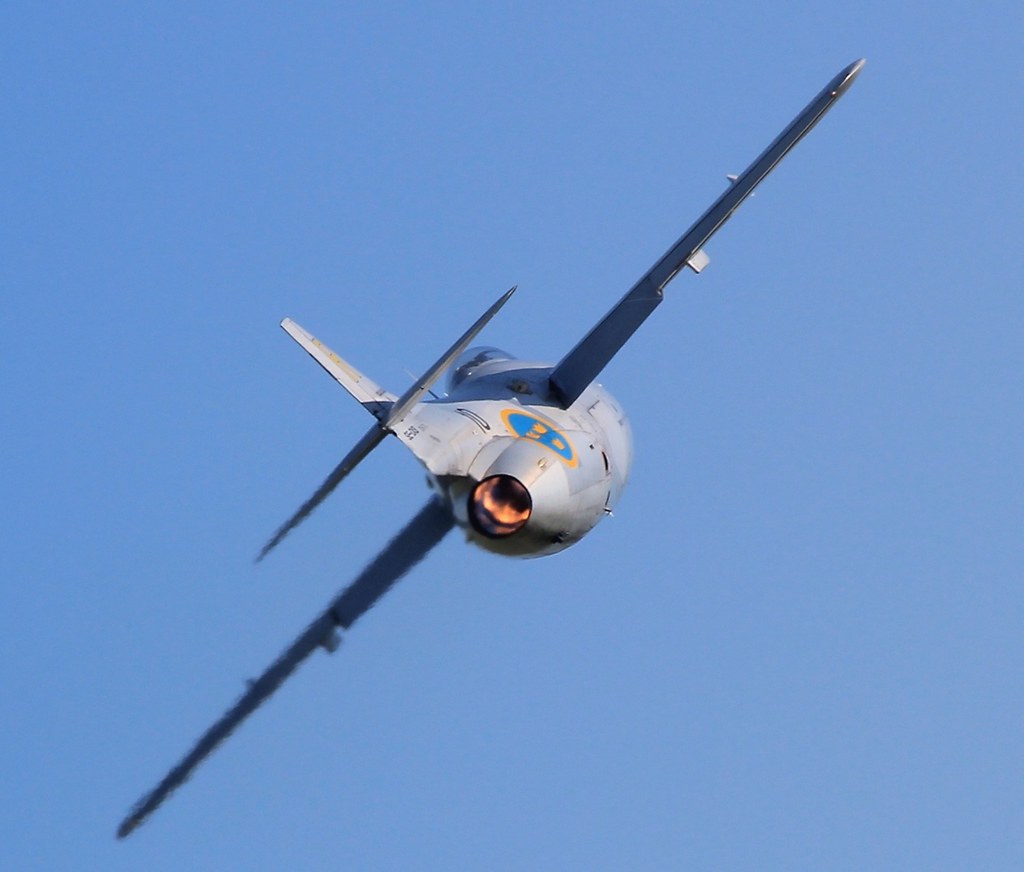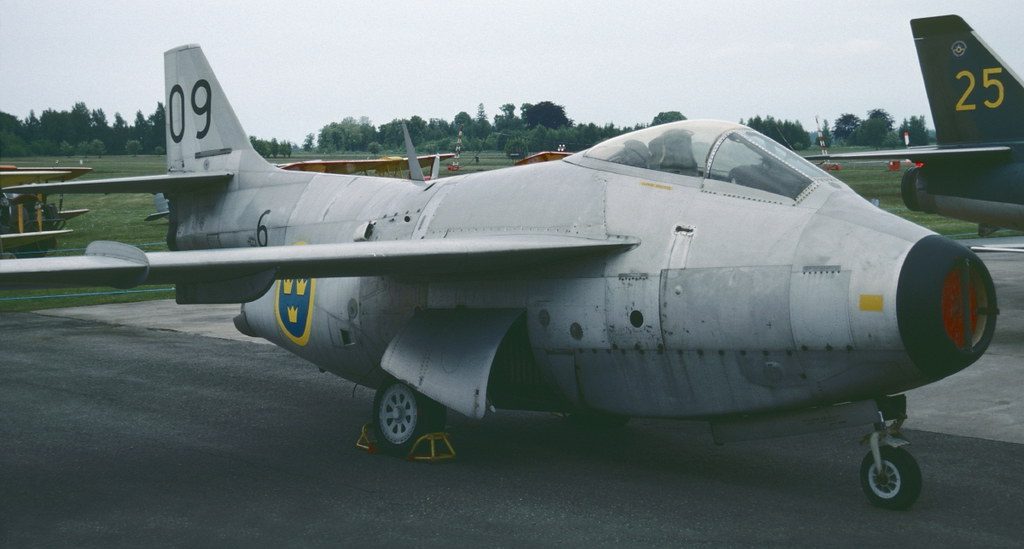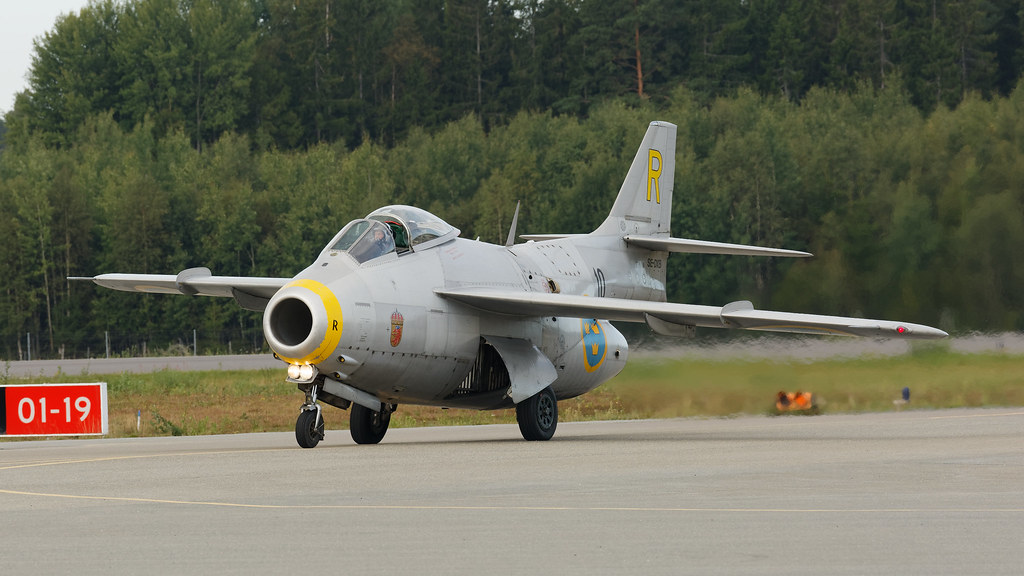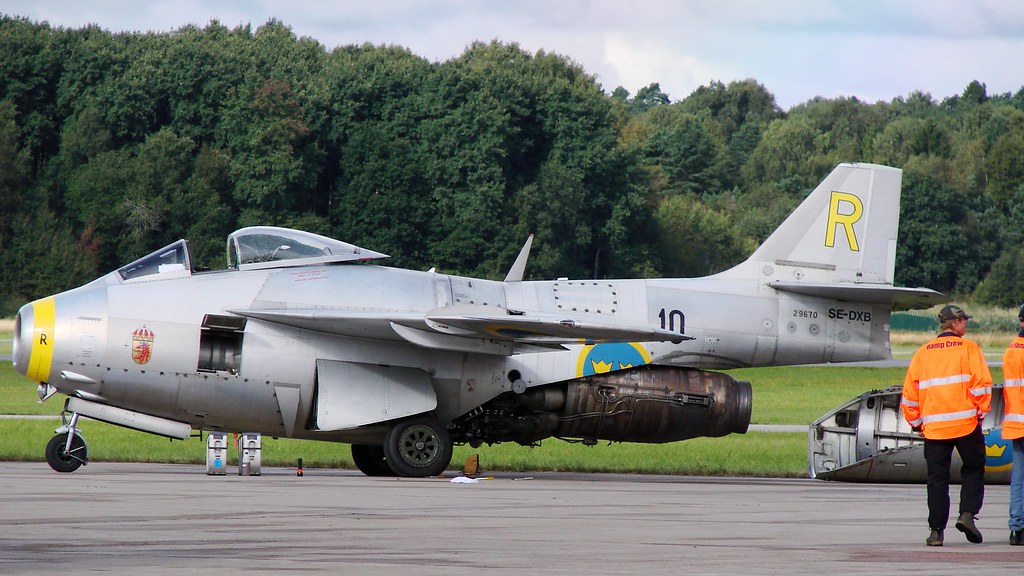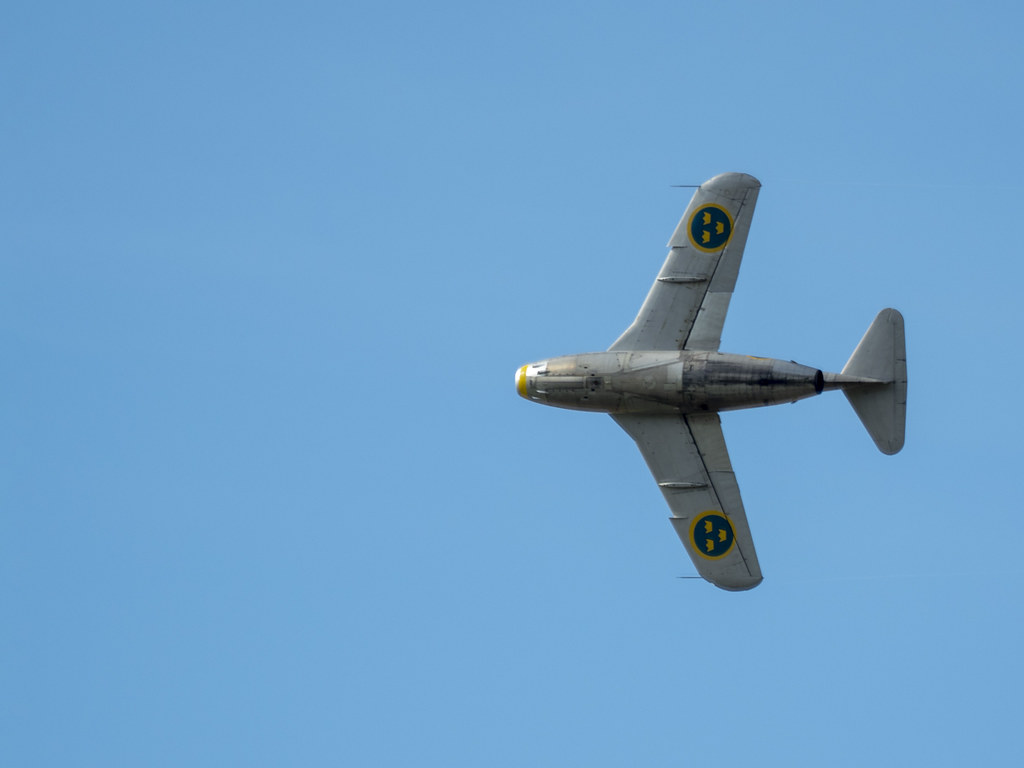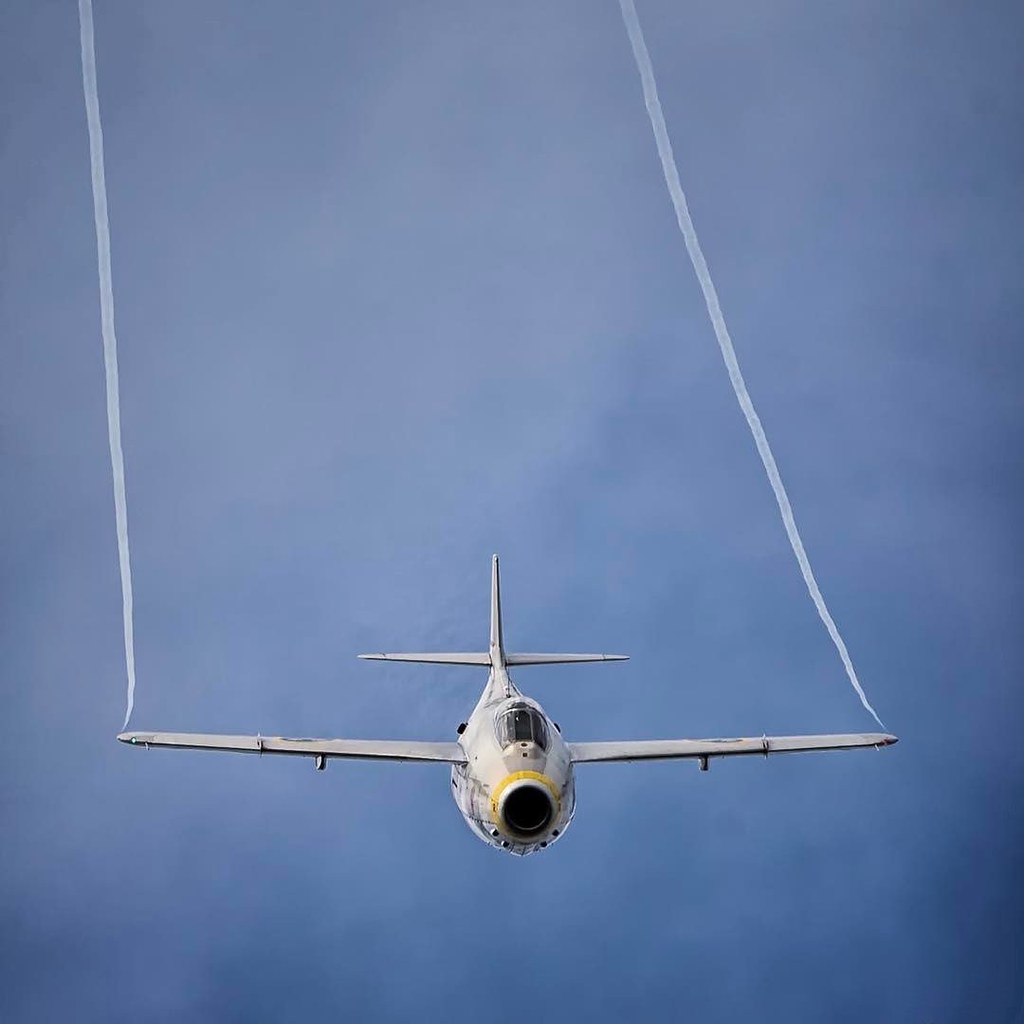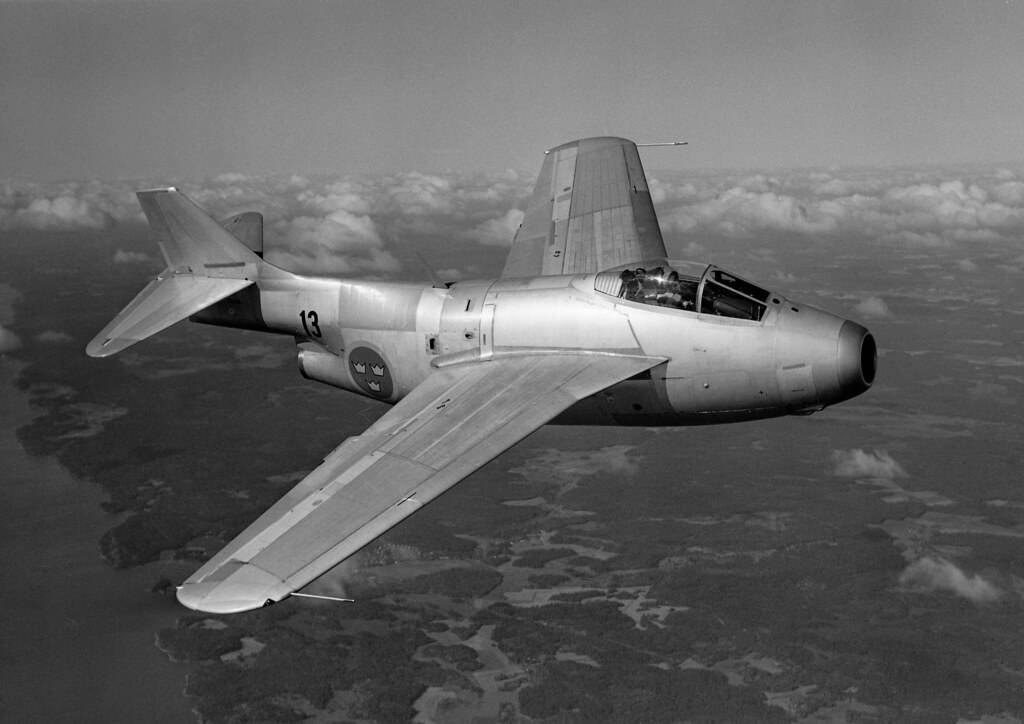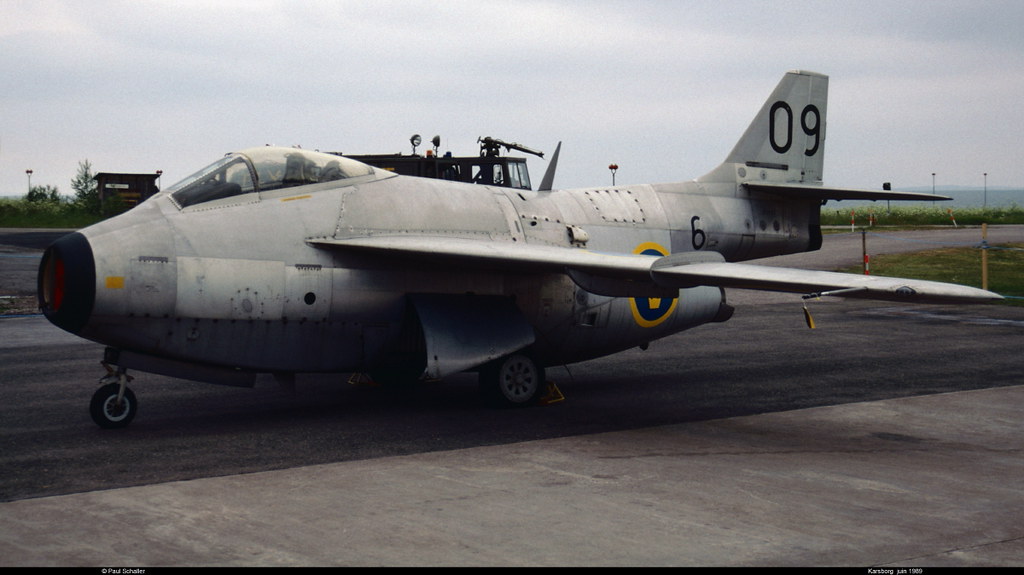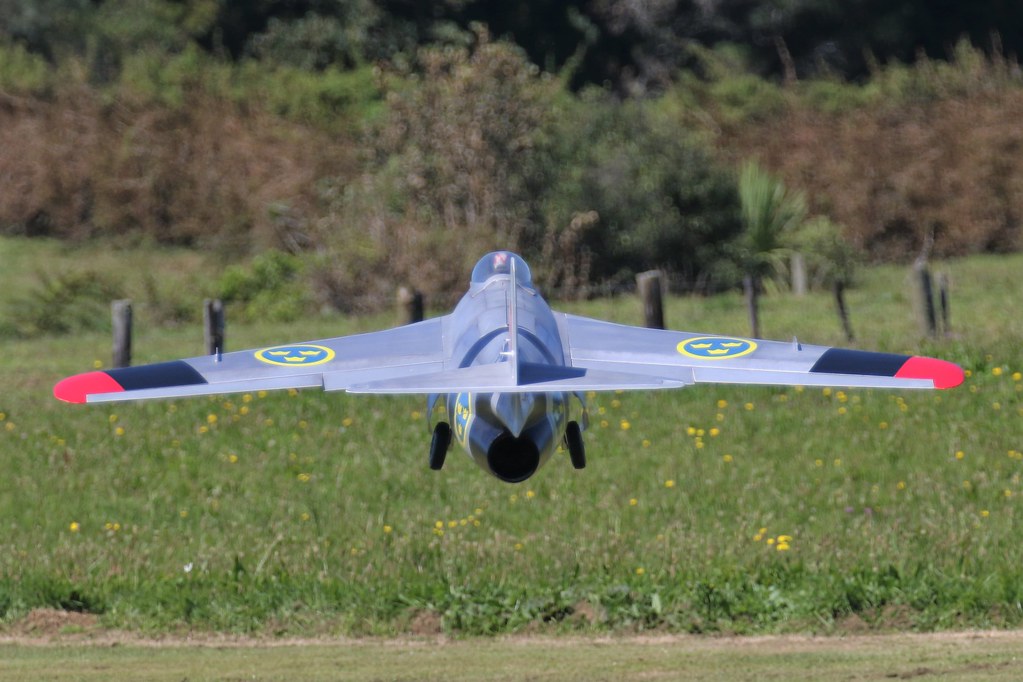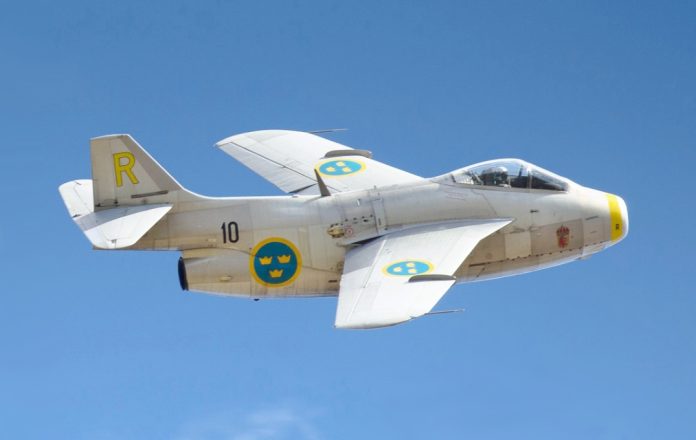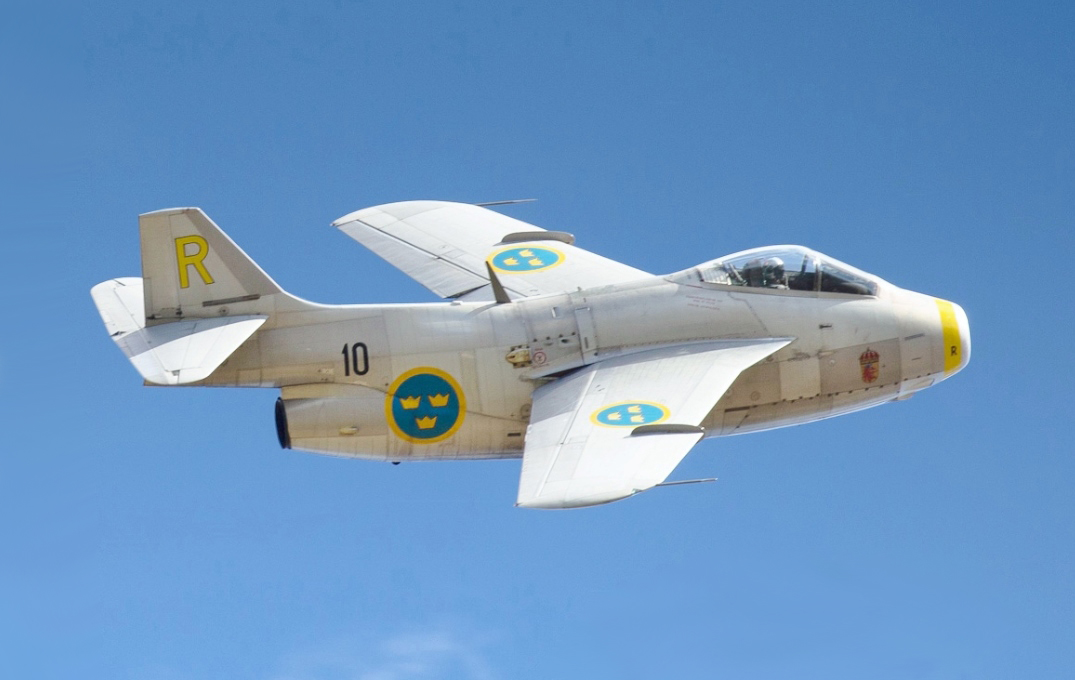
Once celebrated as an aeronautical marvel in the annals of military aviation history, the Saab J 29, colloquially known as “The Flying Barrel,” continues to be a testament to Sweden’s innovative contributions during the early Cold War era.Developed by Saab in the 1950s, the J 29 was Sweden’s second turbojet-powered combat aircraft, following the Saab 21R. With a production of 661 units from 1950 to 1956, the Saab 29 had the highest production volume of any SAAB aircraft.
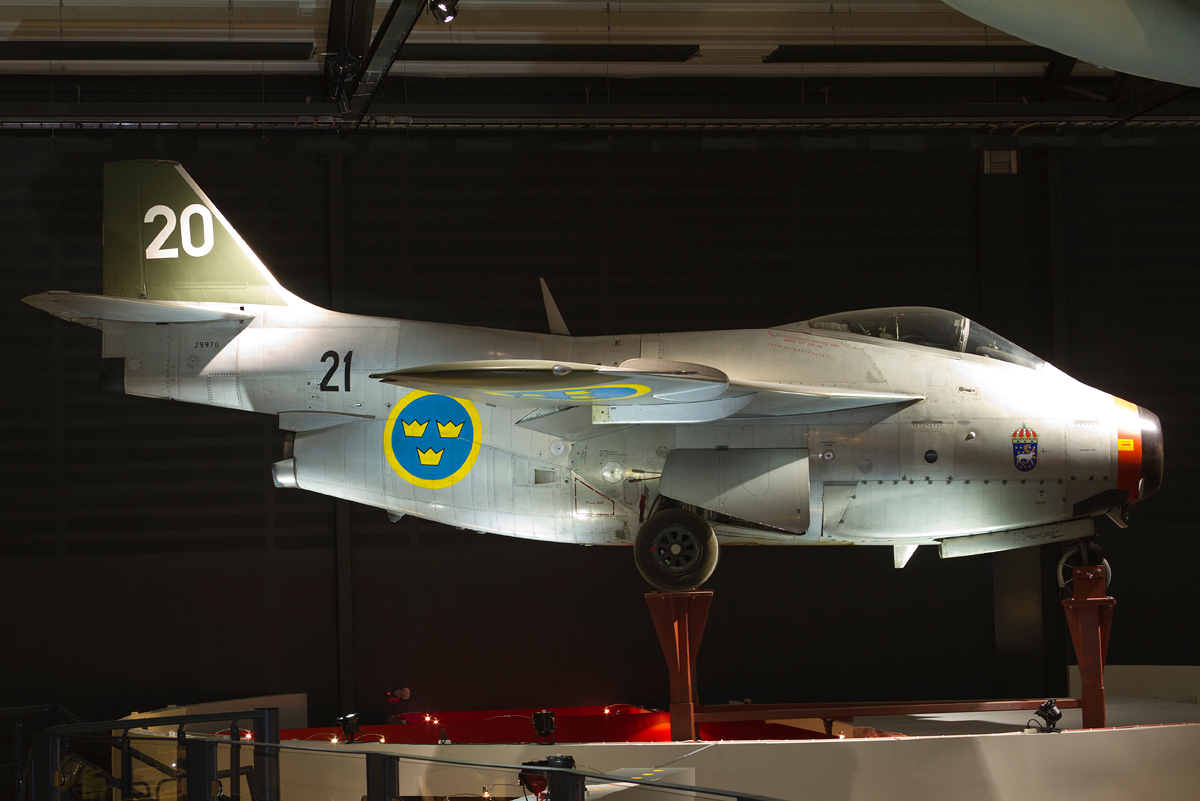
The design’s genesis in the immediate post-WWII period was a direct response to Sweden’s need for a robust air defense system, a sentiment amplified by the mounting pressures of the Cold War. Saab’s engineers, leveraging German aeronautical research on swept-wing designs, developed an aircraft whose agility and speed were its defining traits. During the early days of the Cold War, Sweden, while maintaining neutrality, faced heightened concerns due to its geographical proximity to both the Soviet Union and Western NATO powers. Both sides were investing more time and resources into military projects to surpass each other.
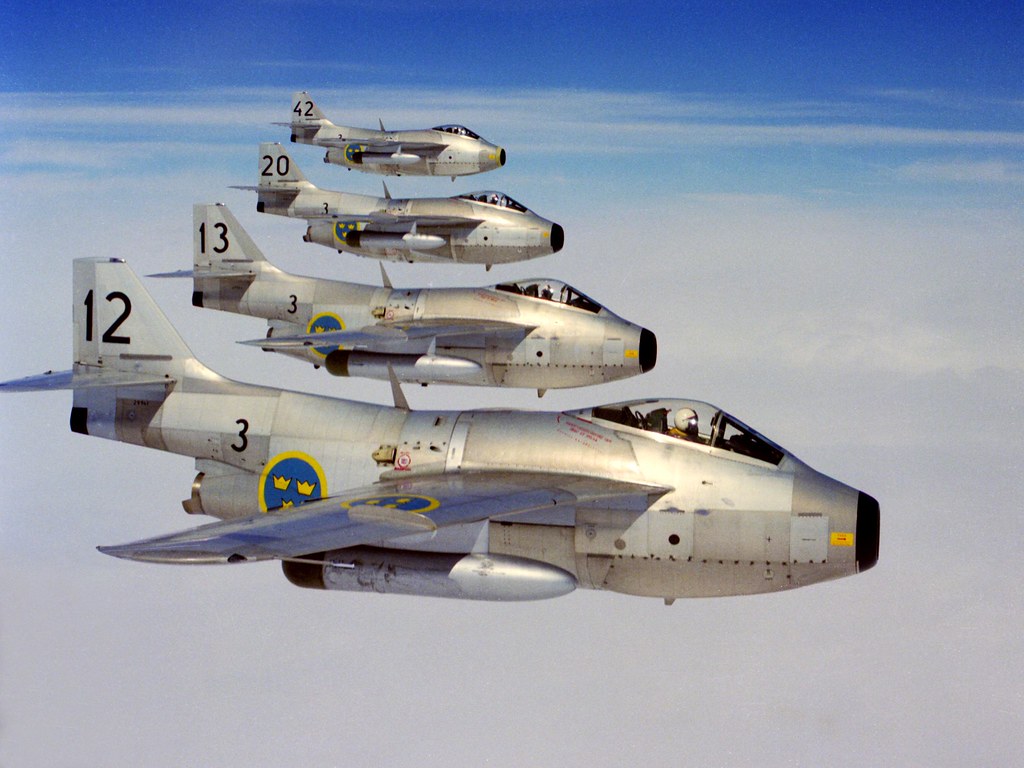
Unveiled as a fighter and later adapted as a fighter-bomber, the J 29 set the world speed record in 1954 on a 500 km closed circuit at 977 km/h. Its reconnaissance variant, the S 29C, also clinched an international speed record over a 1,000 km closed-circuit course in 1955. Despite a challenging start, which saw a high crash record due to initial pilot inexperience with swept-wing aircraft, the J 29’s operational proficiency soon became evident.

Its versatility was demonstrated in the African skies when, in 1961, the Tunnan became the first Swedish jet to see combat. Deployed as part of the United Nations ONUC peacekeeping mission in the Republic of Congo, five J 29Bs—later reinforced with additional aircraft—executed ground attack missions using internal cannons and unguided rockets,none were lost to combat despite intense ground fire. The UN engagement concluded in 1964, and some of the J 29s stationed in Africa were destroyed on-site, as returning them to Sweden was deemed economically unfeasible.
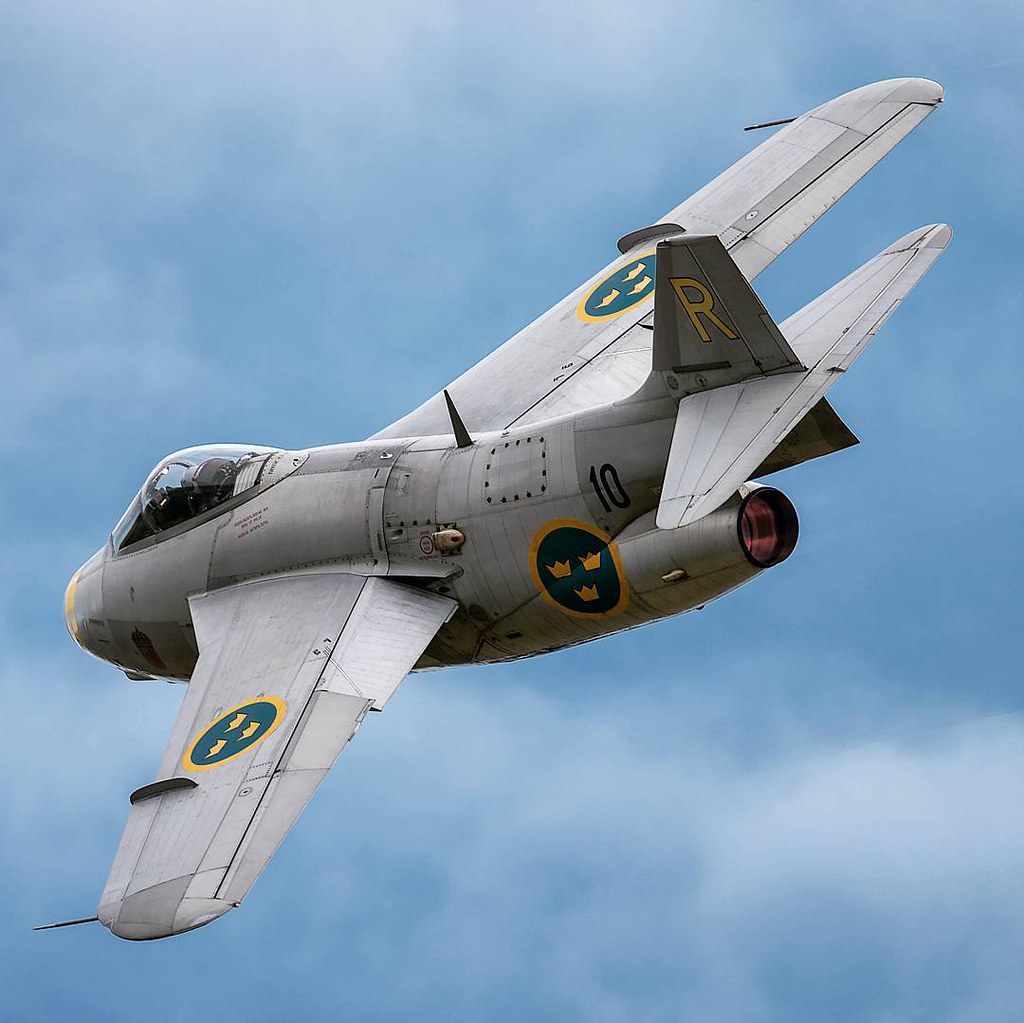
The retirement of the J 29 in the 1970s did not mean it was forgotten. Austria, which acquired 30 Tunnans in 1961, used them until 1972. Some of these aircraft ended up in museums, preserving the legacy of the “Flying Barrel.” Presently, only three J 29Fs are exhibited publicly: one in Austria at the Museum of Military History in Vienna, another at the French Musée de l’Air in the former Paris–Le Bourget Airport, and a third at the Swedish Cold War “Aeroseum” in Göteborg.
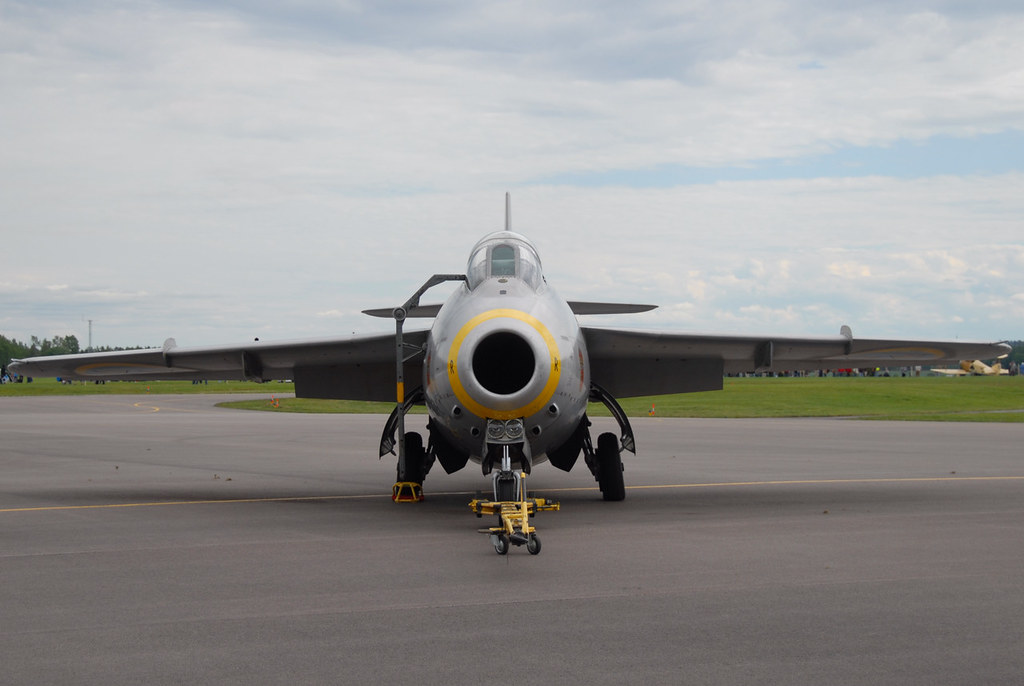
The Saab J 29 Tunnan, with its distinctive round fuselage and thin, swept-back wings, stands as a relic of a bygone era. Yet, its story is not simply one of innovation and combat service, it is a narrative that encapsulates a nation’s strategic foresight and technological ingenuity during a time of global tension and uncertainty.
related images you might be interested.
